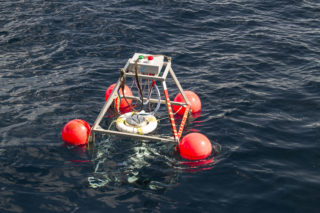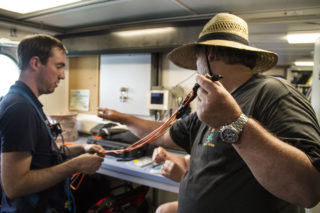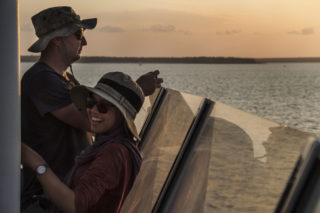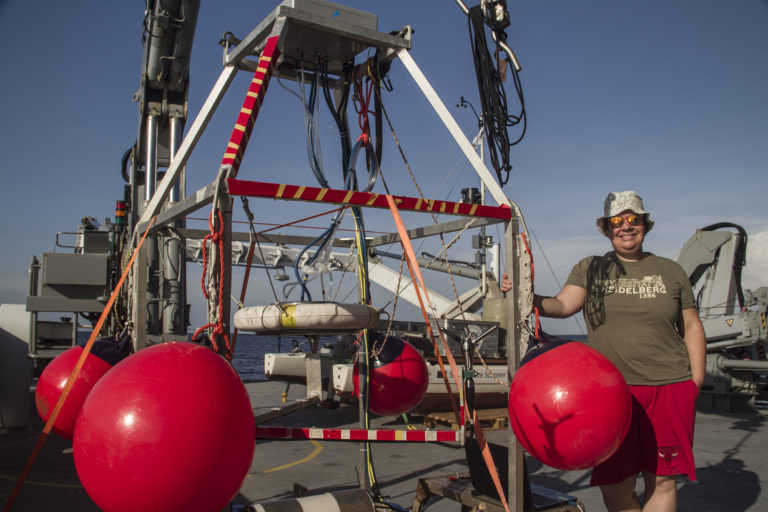Mariana looks at the buoy drifting away from R/V Falkor. She has done it countless times before; but as she assists in the deployment of the snifel off of the ship’s aft deck, the familiar anxiety comes back all the same. Designed to measure the speed of the exchange of carbon dioxide between the atmosphere and the ocean, the drifting buoy is an expensive and sophisticated piece of equipment. The instrument needs to be lowered into the water correctly; she sighs in relief when she confirms everything is OK.

After the first night of sailing, daylight has made clear just how ambitious and intense this expedition will be. The catamaran, kayak, snifel, and CTD rosette have been deployed in order to finesse the process and make sure everybody is prepared for the five weeks ahead. The ship is always teeming with activity, but the next cruise will be an action packed expedition by any standard.
Taking up the challenge
The boundary layer of the ocean -where water touches air- can be thinner than a millimeter, but you would not know it judging from the amount of equipment involved in its study: unmanned airborne vehicles, remotely controlled catamarans, free floating chambers, aerosol sensors, CTD profilers, drifting buoys… the list goes on. There is much to be learned, and the team is sparing no effort to do so.

Three different scientific teams are sharing R/V Falkor’s time, space and capabilities, which changes the cruise’s dynamic. Back in Darwin Australia, the days prior to departure were exceptionally busy and there will be no slowing down now.
The biggest challenge isn’t the number of devices and tools, the diversity of science fields working hand in hand, or even the delicate coordination so many days at sea require. The main challenge could be, unsurprisingly, what Neptune has up his sleeve.
Smooth Sailing
Directly measuring the sea surface microlayer is difficult, to say the least. Some of the research calls for calm sea states. The microlayer dynamics are quite complex due to the presence of surface waves, capillary effects, penetrating solar radiation, rainfall and surface films. Roughness at sea could alter some of the qualities of the microlayer and make it more difficult to gather information.

Any sailor will tell you never to trust a weather forecast beyond three days since there is simply no way to predict climatological conditions. Scientists must always have a plan B. The team based their selection of study regions on monthly wind speeds over the Indian and Pacific Oceans to minimize risks, but if Neptune doesn’t collaborate the route will not be defined by stations or predetermined study sites. R/V Falkor will change her cruise track to find areas with calmer waters.
Calm waters is what the Pacific Ocean is offering R/V Falkor today. The snifel is safely back onboard and Mariana can relax as she retrieves the information collected by the buoy’s sensors. In any sea voyage, one must allow a few days for a routine to take shape. No matter how complex the deployments, everybody is confident that after a few practice rounds things will go smoothly. Once everybody gets their sea legs, science will take the wheel.


